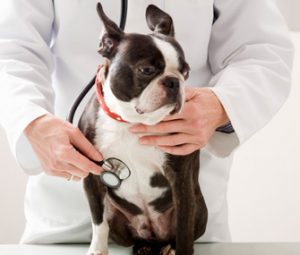Approximately one quarter of our body size is composed of the lungs and the heart – this area supplies the oxygen for life, the blood for transport and the ability for the body to remove carbon dioxide – a waste product of each cell in the body. I know that every owner is aware of the importance of the heart and lungs – try not breathing for a minute or two and feel the effect on the body, block the blood supply to the brain for over 3 minutes and most mammals will be unconscious after 5 minutes, there is often permanent brain damage and after 8 minutes then the survival rate is nearly zero.
This is an area that most owners ignore – they just expect that their animal’s heart will keep functioning normally and the lungs will keep expanding and contracting forever. Most animal’s hearts beat around 100 – 120 beats per minute and that means every year their heart is beating at least 7,488,000 times per year and 112,320,000 times in their life. Gosh – no wonder things can go wrong!
Lungs contract and dilate around 25 times per minute and that means that around 1,872,00 breaths are taken every year – that is a lot of movement for the muscles and for the lung tissue.
People will commonly go to their doctor to get their blood pressure checked, their cholesterol level monitored, their heart rate and sounds scrutinised but then ignore the same procedures for their animal. Now before I go any further I should point out that arteries are rarely blocked with cholesterol in animals (most animals do not produce the “bad cholesterol”) and blood pressure is not easily monitored in animals, but general examination of the heart sounds and rate is easily checked by a veterinarian.
The 3 most common problem associated with the heart are
- Valvular dysfunctions – where the valves within the heart are not closing properly and the blood is not flowing adequately to nurture the cells of the body.
- Arrythmias – where the heart is not beating normally and at times the blood flow is disrupted when the
heart misfires. - Cardiomyopathy – where the heart becomes enlarged and the normal function of the muscles becomes disrupted affecting blood supply to the body.
 Most of these problems can be detected by simply putting a good stethoscope on the chest of your animal and having someone attached to this stethoscope who is trained to detect abnormalities in the heart rate and the heart sounds of your animal.
Most of these problems can be detected by simply putting a good stethoscope on the chest of your animal and having someone attached to this stethoscope who is trained to detect abnormalities in the heart rate and the heart sounds of your animal.
If abnormalities are detected, then further tests may be recommended to identify the cause or the severity of the problem, but it all starts with detection. Obviously early detection of a problem is important if we want to minimise the development of the problem or if we want to give the animal maximum quality and quantity of life.
Lungs are basically the same way. The best way to detect early problems is for someone who has the appropriate knowledge to listen to the lungs with a stethoscope.
So, what can you, the owner, do to assist your animal – take your ageing animal to a veterinarian at least once a year (or twice a year once the animal is in the geriatric years of life) and get the animal examined by your veterinarian. The examination of the lungs and heart does not take long but it is so important for the health and the happiness of your animal. Most heart and lung problems can be treated if the abnormality is detected early enough – but that means BEFORE the animal starts showing signs of problems.
